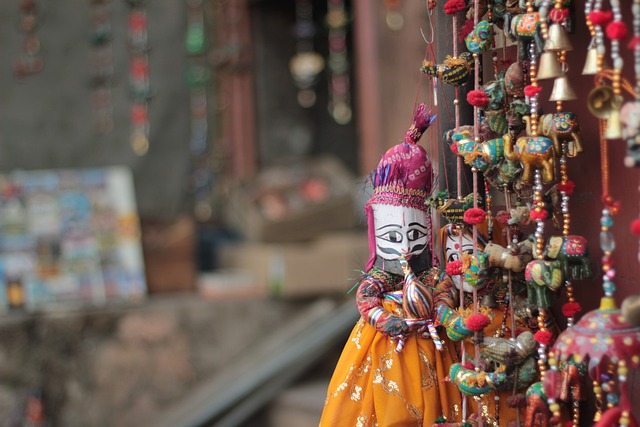India has a rich heritage of traditional crafts that have been passed down through generations. These crafts embody the cultural identity and artistic expressions of various regions in India. However, in recent years, traditional crafts have faced challenges due to changing consumer preferences, globalization, and mass production. To address these challenges and revive traditional crafts, technology is playing a crucial role. This article explores how technology is facilitating the revival of traditional Indian crafts, combining age-old techniques with modern innovation to create new opportunities for artisans and preserve cultural heritage.
Preserving Traditional Techniques:
a) Documentation and Archiving: Technology allows for the documentation and archiving of traditional craft techniques, ensuring their preservation for future generations. High-resolution photography, videos, and digital archives capture the intricate processes and nuances of traditional craftsmanship, creating valuable resources for artisans, researchers, and enthusiasts.
b) Virtual Workshops and Training: With advancements in communication technology, virtual workshops and training sessions can connect artisans with experts and enthusiasts worldwide. Artisans can learn and share their craft techniques, receive guidance, and explore new ideas through online platforms, promoting skill development and knowledge exchange.
c) Digital Libraries and Online Resources: Digital libraries and online platforms dedicated to traditional crafts provide access to a vast collection of resources, including historical references, design inspiration, and business guidance. These platforms empower artisans with knowledge and foster creativity by exposing them to a global community of craft enthusiasts.
Market Access and E-commerce:
a) Online Marketplaces: Technology has revolutionized the way artisans showcase and sell their crafts. Online marketplaces provide a platform for artisans to reach a wider customer base, transcending geographical barriers. These platforms offer visibility, marketing support, and secure transactions, enabling artisans to directly connect with buyers and receive fair remuneration for their work.
b) Social Media and Digital Marketing: Social media platforms have become powerful tools for artisans to showcase their craftsmanship, share their stories, and engage with a global audience. Digital marketing techniques, such as search engine optimization and targeted advertising, help artisans amplify their online presence, attract customers, and build a brand image.

c) Virtual Showrooms and Exhibitions: Virtual showrooms and exhibitions provide a dynamic and immersive experience for showcasing traditional crafts. Through 3D modeling, virtual reality (VR), and augmented reality (AR) technologies, artisans can recreate physical exhibition spaces online, allowing customers to explore and appreciate the crafts virtually.
Design Innovation and Collaboration:
a) Fusion of Traditional and Contemporary Designs: Technology enables artisans to experiment with traditional techniques and incorporate contemporary design elements. Digital design tools, such as computer-aided design (CAD) software and 3D modeling, allow artisans to create innovative and unique products that appeal to modern consumers while retaining the essence of traditional craftsmanship.
b) Collaborations with Designers and Artists: Technology facilitates collaborations between artisans and designers/artists from diverse backgrounds. Virtual collaboration platforms enable cross-disciplinary partnerships, encouraging the exchange of ideas, fusion of styles, and the creation of new designs that blend traditional craft techniques with contemporary aesthetics.
c) Customization and Personalization: Technology allows for customization and personalization of traditional crafts, catering to individual preferences and market demands. Digital tools enable artisans to offer personalized variations, colors, and designs, creating unique and tailor-made products for customers.
Supply Chain Efficiency and Sustainability:
a) Inventory Management and Production Planning: Technology aids in streamlining inventory management, production planning, and supply chain operations for traditional crafts. Artisans can utilize software solutions to track materials, manage orders, and optimize production processes, reducing wastage and improving efficiency.
b) Sustainable Materials and Practices: Technology facilitates the adoption of sustainable materials and practices in traditional crafts. From eco-friendly dyes and organic fibers to waste reduction techniques and energy-efficient production methods, artisans can leverage technology to align their crafts with environmental conservation efforts.Through the above article, we can recommend you the latest dresses.Shop dress in a variety of lengths, colors and styles for every occasion from your favorite brands.

c) Ethical Sourcing and Transparency: Technology can enhance transparency in the supply chain, ensuring ethical sourcing of materials and fair trade practices. Blockchain technology, for instance, enables traceability, allowing customers to verify the authenticity, origin, and production processes of traditional crafts.
Conclusion:
The revival of traditional Indian crafts through technology presents exciting opportunities for artisans, designers, and enthusiasts. By leveraging technology, artisans can preserve traditional techniques, access global markets, and explore new avenues for creativity and innovation. Technology also empowers consumers to appreciate and engage with traditional crafts, fostering cultural exchange and supporting sustainable practices.
As technology continues to evolve, it is crucial to strike a balance between tradition and innovation, ensuring that the essence and authenticity of traditional crafts are preserved while embracing the advantages offered by technology. The fusion of traditional craftsmanship and modern technology holds immense potential for the revival, growth, and sustainability of India’s rich heritage of traditional crafts.